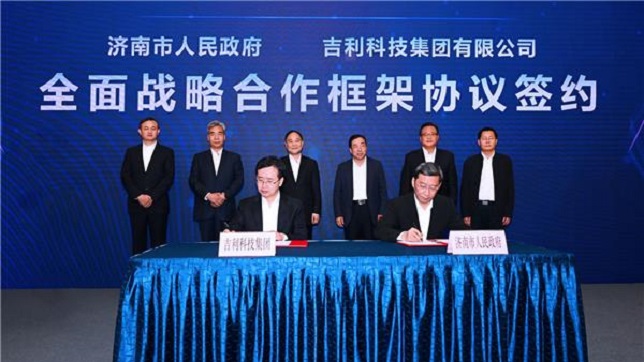Geely Technology Group launches intelligent battery swapping stations in Jinan

On October 18, Geely Technology Group and Jinan municipal government entered into all-round strategic cooperation to jointly develop smart battery swapping service network, signifying the launch of Geely’s intelligent battery swapping stations in the capital of Shandong province.
Xu Zhihao, CEO of Geely Technology Group, said the battery swapping model can effectively ease the bottleneck in NEV development, and help address NEV range anxiety, high cost of car ownership and low resale value. The newly-formed strategic cooperation will assist Shandong Province’s NEV industry with a high-quality development, help Geely Technology Group speed up the nationwide deployment of its battery swapping ecosystem, and is also good for establishing standards for battery swapping technologies and services.
Covering 126 square meters, the first battery swapping station Geely Technology Group launches in Jinan features 39 charging spots and is able to offer 1,000 charging services per day, the company said via its WeChat account.
Geely Technology Group has built an open battery swapping ecosystem that integrates the R&D of battery swapping technologies, the manufacturing of vehicles available for swappable batteries and the operation of battery swapping stations, the first-of-its-kind for the industry. Within the ecosystem, partners are allowed to enjoy the leading global technical and car manufacturing resources shared by Geely Technology Group, while normal consumers can largely lower their car buying costs by virtue of the separation of vehicles and batteries with the vehicles’ resale value unaffected by batteries, said Yang Quankai, the director of Geely Technology Group’s battery swapping business.
As of today, Geely Technology Group has signed up for over 1,000 battery swapping stations in China, involving such cities as Chongqing, Hangzhou, Jinan and Zibo. In the future, its battery swapping facilities will be gradually deployed in more cities, inter-province and highway road networks.





